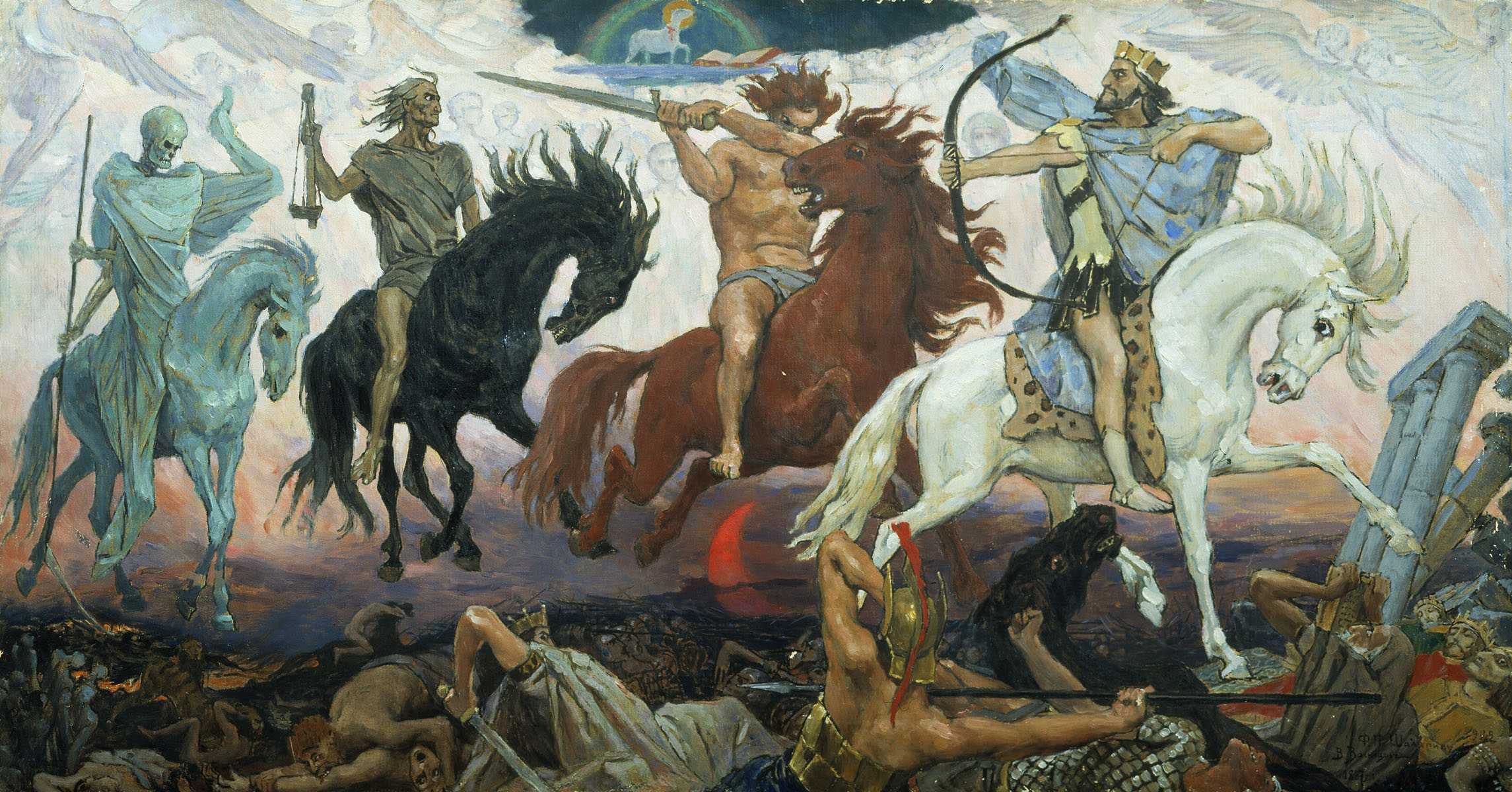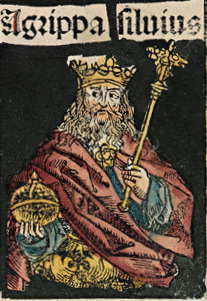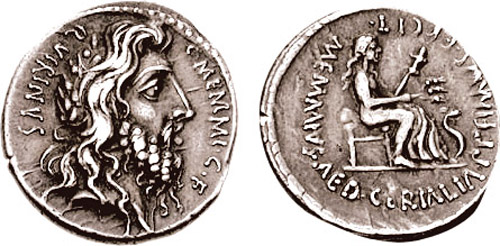|
Armilus
Armilus ( he, ארמילוס) (also spelled Armilos and Armilius) is an anti-messiah figure in medieval Jewish eschatology who will conquer the whole Earth, centralizing in Jerusalem and persecuting the Jewish believers until his final defeat at the hands of the Jewish Messiah. His believed destruction symbolizes the ultimate victory of the Jewish Messiah in the Messianic Age. Sources The Sefer Zerubbabel is probably from the 7th century CE. Armilus is thought to be a cryptogram for Heraclius, a Byzantine emperor, and it is thought that the events described in the Sefer Zerubbabel coincide with the Jewish revolt against Heraclius. The 11th-century Midrash Vayosha, which describes Armilus, was first published at Constantinople in 1519. According to the ''Jewish Encyclopedia'', Armilus is "a king who will arise at the end of time against the Messiah, and will be conquered by him after having brought much distress upon Israel." He is spoken of in the Midrash Vayosha, Sefer Zerub ... [...More Info...] [...Related Items...] OR: [Wikipedia] [Google] [Baidu] |
Messiah Ben Joseph
In Jewish eschatology Mashiach ben Yoseph or Messiah ben Joseph ( he, מָשִׁיחַ בֶּן־יוֹסֵף ''Māšīaḥ ben Yōsēf''), also known as Mashiach bar/ben Ephraim (Aram./Heb.: Māšīaḥ bar/ben Efrayīm), is a Jewish messiah from the tribe of Ephraim and a descendant of Joseph. The figure's origins are much debated. Some regard it as a rabbinic invention, but others defend the view that its origins are in the Torah. Messianic tradition Jewish tradition alludes to four messianic figures, called the Four Craftsmen, from a vision found in Book of Zechariah (Zechariah Hebrew text 2:1-4; traditional English texts 1:18-21). The four craftsmen are discussed in Babylonian Talmud Suk. 52b. Rav Hana bar Bizna, attributed to Rav Simeon Hasida, identifies these four craftsmen as Messiah ben David, Messiah ben Joseph, Elijah, and the Righteous Priest. Each will be involved in ushering in the Messianic age. They are mentioned in the Talmud and the Book of Zechariah. Rashi in ... [...More Info...] [...Related Items...] OR: [Wikipedia] [Google] [Baidu] |
Antichrist
In Christian eschatology, the Antichrist refers to people prophesied by the Bible to oppose Jesus Christ and substitute themselves in Christ's place before the Second Coming. The term Antichrist (including one plural form)1 John ; . 2 John . is found five times in the New Testament, solely in the First and Second Epistle of John. The Antichrist is announced as the one "who denies the Father and the Son." The similar term ''pseudokhristos'' or "false Christ" is also found in the Gospels. In Matthew ( chapter 24) and Mark ( chapter 13), Jesus alerts his disciples not to be deceived by the false prophets, who will claim themselves as being Christ, performing "great signs and wonders". Three other images often associated with the singular Antichrist are the "little horn" in Daniel's final vision, the "man of sin" in Paul the Apostle's Second Epistle to the Thessalonians, and the Beast of the Sea in the Book of Revelation. Etymology ''Antichrist'' is translated from the ... [...More Info...] [...Related Items...] OR: [Wikipedia] [Google] [Baidu] |
Sefer Zerubbabel
Sefer Zerubavel ( he, ספר זרובבל), also called the Book of Zerubbabel or the Apocalypse of Zerubbabel, is a medieval Hebrew apocalypse written at the beginning of the 7th century CE in the style of biblical visions (e.g. Daniel, Ezekiel) placed into the mouth of Zerubbabel, the last descendant of the Davidic line to take a prominent part in Israel's history, who laid the foundation of the Second Temple in the 6th century BCE. The enigmatic postexilic biblical leader receives a revelatory vision outlining personalities and events associated with the restoration of Israel, the End of Days, and the establishment of the Third Temple. History The groundwork for the book was probably written in Palestine between 629 and 636, during fierce struggles between Persia and the Byzantine Empire for control of the Holy Land (qq.v. Byzantine-Arab Wars, Muslim conquest of Syria). These wars touched Byzantine Palestine and stirred Messianic hopes among Jews, including the author for ... [...More Info...] [...Related Items...] OR: [Wikipedia] [Google] [Baidu] |
Anti-messiah
In Christian eschatology, the Antichrist refers to people prophesied by the Bible to oppose Jesus Christ and substitute themselves in Christ's place before the Second Coming. The term Antichrist (including one plural form) 1 John ; . 2 John . is found five times in the New Testament, solely in the First and Second Epistle of John. The Antichrist is announced as the one "who denies the Father and the Son." The similar term ''pseudokhristos'' or "false Christ" is also found in the Gospels. In Matthew ( chapter 24) and Mark ( chapter 13), Jesus alerts his disciples not to be deceived by the false prophets, who will claim themselves as being Christ, performing "great signs and wonders". Three other images often associated with the singular Antichrist are the "little horn" in Daniel's final vision, the "man of sin" in Paul the Apostle's Second Epistle to the Thessalonians, and the Beast of the Sea in the Book of Revelation. Etymology ''Antichrist'' is translated from the co ... [...More Info...] [...Related Items...] OR: [Wikipedia] [Google] [Baidu] |
Jewish Messiah
The Messiah in Judaism () is a savior and liberator figure in Jewish eschatology, who is believed to be the future redeemer of the Jewish people. The concept of messianism originated in Judaism, and in the Hebrew Bible a messiah is a king or High Priest of Israel traditionally anointed with holy anointing oil. However, messiahs were not exclusively Jewish, as the Hebrew Bible refers to Cyrus the Great, king of the first Persian empire, as a messiah for his decree to rebuild the Jerusalem Temple. In Jewish eschatology, the Messiah is a future Jewish king from the Davidic line, who is expected to be anointed with holy anointing oil and rule the Jewish people during the Messianic Age and world to come. The Messiah is often referred to as "King Messiah" ( he, מלך משיח, translit=melekh mashiach) or in Aramaic. Jewish messianism gave birth to Christianity, which started as a Second Temple period messianic Jewish sect or religious movement. Etymology In Jewish eschatology, ... [...More Info...] [...Related Items...] OR: [Wikipedia] [Google] [Baidu] |
Messianic Age
In Abrahamic religions, the Messianic Age is the future period of time on Earth in which the messiah will reign and bring universal peace and brotherhood, without any evil. Many believe that there will be such an age; some refer to it as the consummate "kingdom of God" or the " world to come". Jews believe that such a figure is yet to come, while Christians and Muslims believe that this figure will be Jesus. Judaism According to Jewish tradition, the Messianic Era will be one of global peace and harmony; an era free of strife and hardship, conducive to the furtherment of the knowledge of the Creator. The theme of the Messiah ushering in an era of global peace is encapsulated in two of the most famous scriptural passages from the Book of Isaiah: In his Mishneh Torah, Maimonides describes the Messianic Era: :"And at that time there will be no hunger or war, no jealousy or rivalry. For the good will be plentiful, and all delicacies available as dust. :The entire occupation of t ... [...More Info...] [...Related Items...] OR: [Wikipedia] [Google] [Baidu] |
Angra Mainyu
Angra Mainyu (; Avestan: 𐬀𐬢𐬭𐬀⸱𐬨𐬀𐬌𐬥𐬌𐬌𐬎 ''Aŋra Mainiiu'') is the Avestan-language name of Zoroastrianism's hypostasis of the "destructive/evil spirit" and the main adversary in Zoroastrianism either of the Spenta Mainyu, the "holy/creative spirits/mentality", or directly of Ahura Mazda, the highest deity of Zoroastrianism. The Middle Persian equivalent is Ahriman 𐭠𐭧𐭫𐭬𐭭𐭩 (anglicised pronunciation: ). The name can appear in English-language works as Ahrimanes. In the Avesta In Zoroaster's revelation Avestan ''angra mainyu'' "seems to have been an original conception of Zoroaster's." In the Gathas, which are the oldest texts of Zoroastrianism and are attributed to Zoroaster, ''angra mainyu'' is not yet a proper name.Proper names are altogether rare in the Gathas. In these texts, even Ahura Mazda and Amesha Spenta are not yet proper names. In the one instance in these hymns where the two words appear together, the concept sp ... [...More Info...] [...Related Items...] OR: [Wikipedia] [Google] [Baidu] |
Midrash Vayosha
Midrash Vayosha (Hebrew: מדרש ויושע) is an 11th-century CE midrash, one of the smaller midrashim. It is based on Exodus 14:30-15:18. It is an exposition in the style of the later aggadah, and seems to have been intended for Shabbat Shirah or for the seventh day of Passover. Sources Entire sections of ''Midrash Vayosha'' are taken verbatim from the Tanhuma, such as the passage on Exodus 15:3 and on 15:5. The story in the exposition of Exodus 14:30, concerning Satan, who appeared before Abraham and Isaac as they went to the sacrifice, may be compared with similar stories in several other works of midrash. The midrash on Exodus 15:2,7 also contains extracts from the '' Chronicle of Moses''; the passage on Usa, the genius of Egypt, agreeing word for word with the excerpt in Yalkut Shimoni § 241. Here the first edition has merely "Midrash," while other editions give the ''Midrash Abkir'' as the source, although it is doubtful whether this aggadah ever occurred in that w ... [...More Info...] [...Related Items...] OR: [Wikipedia] [Google] [Baidu] |
Apocalypse Of Pseudo-Methodius
Written in Syriac in the late seventh century, the ''Apocalypse of Pseudo-Methodius'' shaped and influenced Christian eschatological thinking in the Middle Ages.Griffith (2008), p. 34.Debié (2005) p. 228.Alexander (1985) p. 13.Jackson (2001) p. 348. Falsely attributed to Methodius of Olympus,Alexander (1985) p. 15. a fourth century Church Father, the work attempts to make sense of the Islamic conquest of the Near East.Ballard (2011) p. 51. The ''Apocalypse'' is noted for incorporating numerous aspects of Christian eschatology such as the invasion of Gog and Magog, the rise of the Antichrist, and the tribulations that precede the end of the world. The book, however, adds a new element to Christian eschatology: the rise of a messianic Roman emperor. This element would remain in Christian apocalyptic literature until the end of the medieval period. The book was early translated into Greek, Latin, Coptic, Armenian and later into Slavonic. Authorship and location The ''Apocalypse' ... [...More Info...] [...Related Items...] OR: [Wikipedia] [Google] [Baidu] |
Agrippa (mythology)
In Greco-Roman mythology, Agrippa (said to have reigned 914-873 BC)Dionysius of Halicarnassus ''Roman Antiquities'' 1.71 () was a descendant of Aeneas and King of Alba Longa, the capital of Latium, southeast of Rome. He was listed as king of Alba Longa in the time of Augustus. Some speculate that this was done in order to give prestige to Augustus' friend and son-in-law Marcus Vipsanius Agrippa. He was also ancestor of the legendary founders of Rome, Romulus and Remus In Roman mythology, Romulus and Remus (, ) are twin brothers whose story tells of the events that led to the founding of the city of Rome and the Roman Kingdom by Romulus, following his fratricide of Remus. The image of a she-wolf sucklin .... Family tree Notes Kings of Alba Longa {{AncientRome-myth-stub ... [...More Info...] [...Related Items...] OR: [Wikipedia] [Google] [Baidu] |
Amulius
In Roman mythology, Amulius () was king of Alba Longa who ordered the death of his infant, twin grandnephews Romulus, the eventual founder and king of Rome, and Remus. He was deposed and killed by them after they survived and grew to adulthood. He is the brother and usurper of Numitor and son of Procas. He was said to have reigned 42 years before his death (794-752 BC).Dionysius of Halicarnassus ''Roman Antiquities'' 1.71 His brother had been king, but Amulius overthrew him, killed his son, and took the throne. He forced Rhea Silvia, Numitor's daughter, to become a Vestal Virgin, a priestess of Vesta, so that she would never bear any sons that might overthrow him. However, she was raped or seduced by the god Mars, resulting in the birth of the twins. Rhea was thrown into prison and her sons ordered to be thrown into the river Tiber. The twins washed up onto dry land and were found by a she-wolf who suckled them. Later their mother was saved by the river god Tiberinus who en ... [...More Info...] [...Related Items...] OR: [Wikipedia] [Google] [Baidu] |
Romulus
Romulus () was the legendary founder and first king of Rome. Various traditions attribute the establishment of many of Rome's oldest legal, political, religious, and social institutions to Romulus and his contemporaries. Although many of these traditions incorporate elements of folklore, and it is not clear to what extent a historical figure underlies the mythical Romulus, the events and institutions ascribed to him were central to the myths surrounding Rome's origins and cultural traditions. Traditional account The myths concerning Romulus involve several distinct episodes and figures, including the miraculous birth and youth of Romulus and his twin brother, Remus; Remus' murder and the founding of Rome; the Rape of the Sabine Women, and the subsequent war with the Sabines; a period of joint rule with Titus Tatius; the establishment of various Roman institutions; the death or apotheosis of Romulus, and the succession of Numa Pompilius. Romulus and Remus According to Roman my ... [...More Info...] [...Related Items...] OR: [Wikipedia] [Google] [Baidu] |






